Objective of the project: Analyze and publicize the problem of noise and study the possible actions to be carried out for a better well-being of our citizens.
4th year ESO students of Cor de Maria present the project about noise pollution to improve the environmental quality of the city of Valls. We consider this project as a local action within the green school project framework.
Areas or disciplines involved: This project is part of the visual and plastic arts, technology and digitization subjects. Different office IT tools and audiovisual treatment programs are used.
The project has been carried out from a sustainable planet vision, in terms of the final objective of the project and the materials used. Other transversal values to highlight in this project are the respect and knowledge of the environment and the deductively investigation to reduce our water and CO2 footprint.
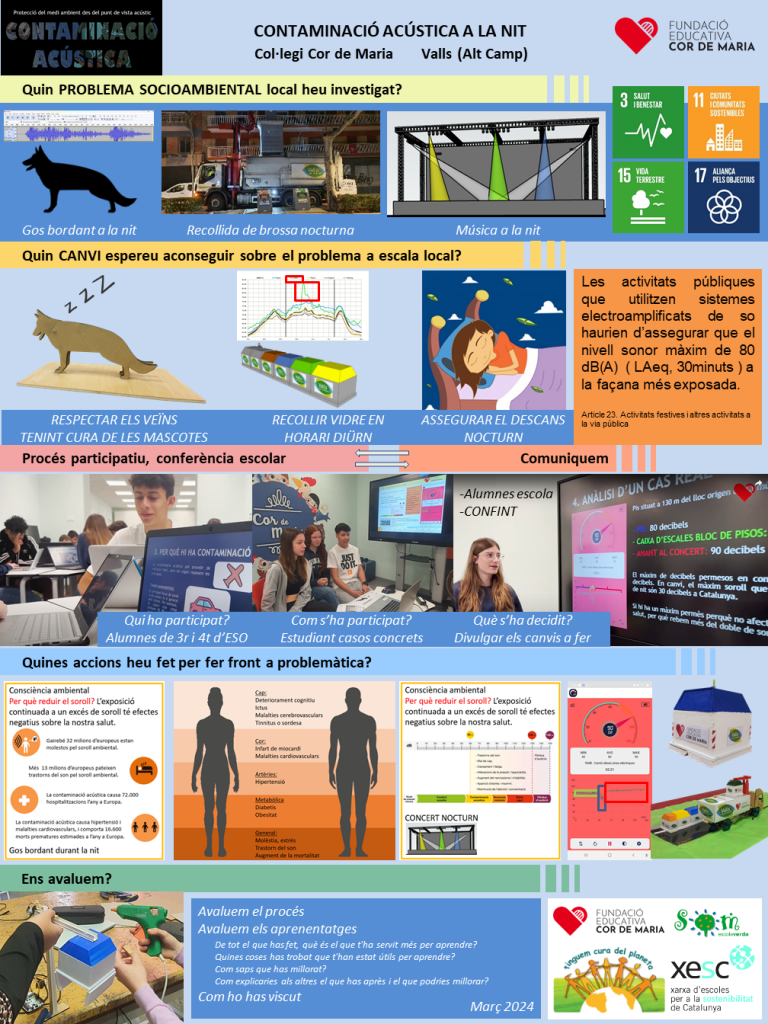
Project process:
- STARTING POINT:
The World Health Organization (WHO) considers environmental noise as one of the main environmental threats to human health in the 21st century.
Excessive noise can cause stress and affect people’s psychological well-being.
Constant exposure to high levels of noise has been associated to the increase of anxiety, depression, sleep disorders and concentration problems.
In this project, we have focused on the nocturnal noise.
Nocturnal noise can disrupt the sleep and cause some disorders such as insomnia. The lack of adequate sleep can have serious health consequences, including a weakened immune system, increased risk of cardiovascular disease, mental health problems and reduced cognitive performance.
The effects of noise on the health of the population:
– They affect a large number of people.
– They have a significant impact on health and general well-being.
-They require prevention and mitigation measures.
To address this issue, it is important to implement policies and strategies that promote quieter and healthier urban environments. For this reason, noise-conscious urban planning must be promoted, by means of quieter technologies and public awareness of the noise negative effects on health.
Therefore, the starting question that the students asked themselves was: «why does this happen?«, «what can we do to solve any of these situations?«
Once the problem was raised and the objective to be achieved was decided, brainstorming was necessary to assess possible measures.
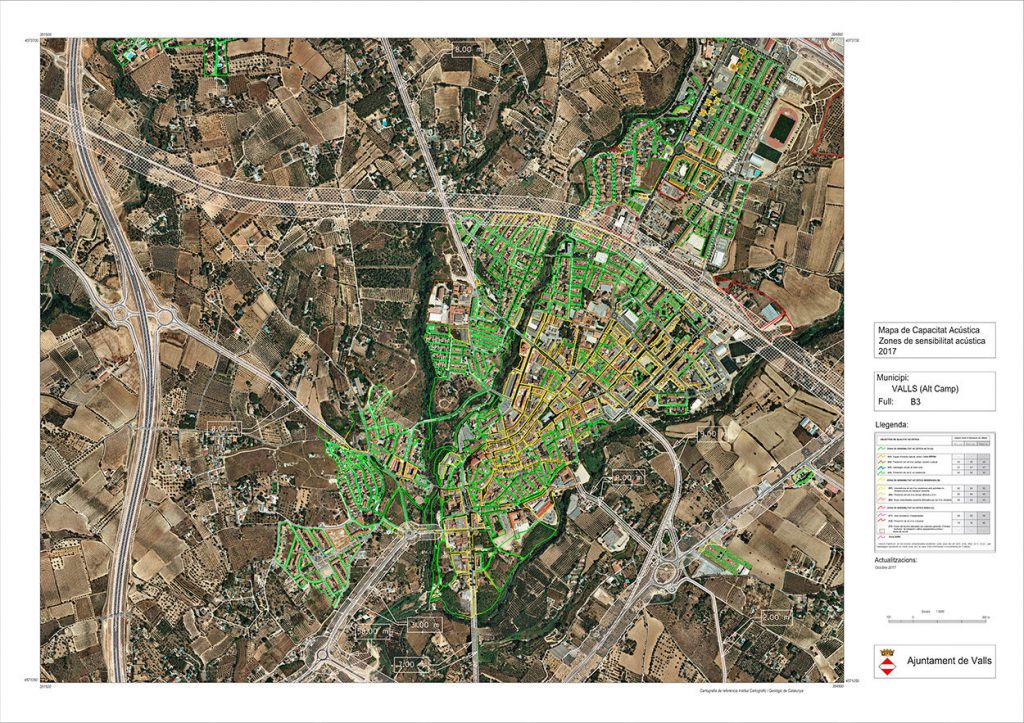

- STUDY OF POSSIBLE MEASURES:
1. A dog barking at night can wake up a whole neighbourhood. This project has studied the causes that can make a dog to bark during the night and what actions can be implemented by its owners.
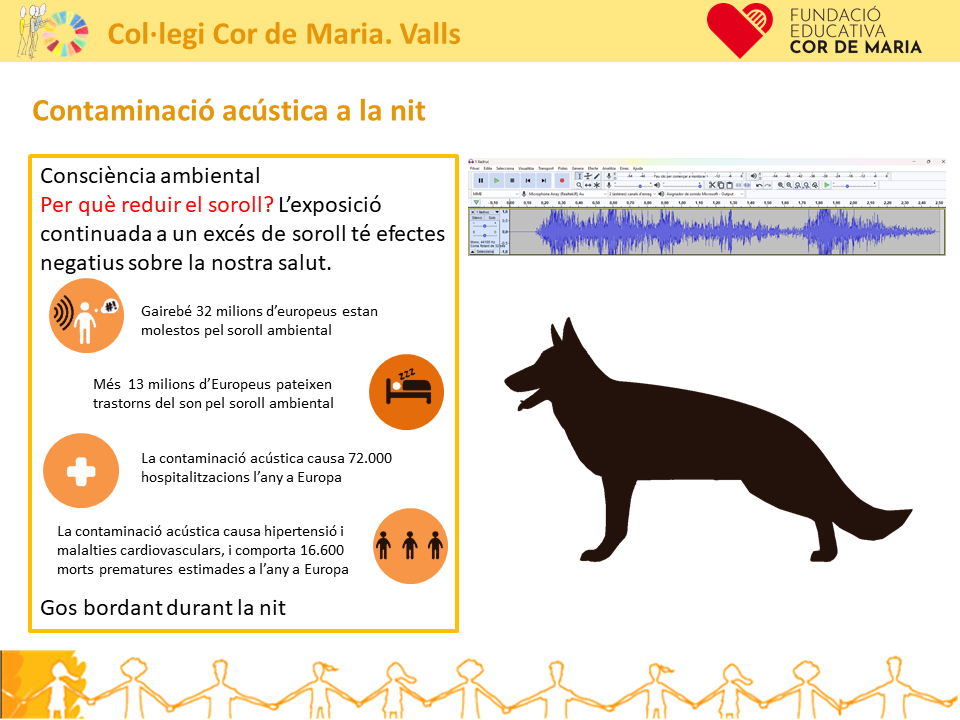
2. Garbage collection has been studied from a local perspective and despite having a highly efficient and modern robotic system with low noise levels, the noise generated when emptying the glass containers should not be done at night (from 11 pm to 7 am). (It should be said that) Glass containers are emptied approximately every 15 days (brown or gray containers are emptied daily).
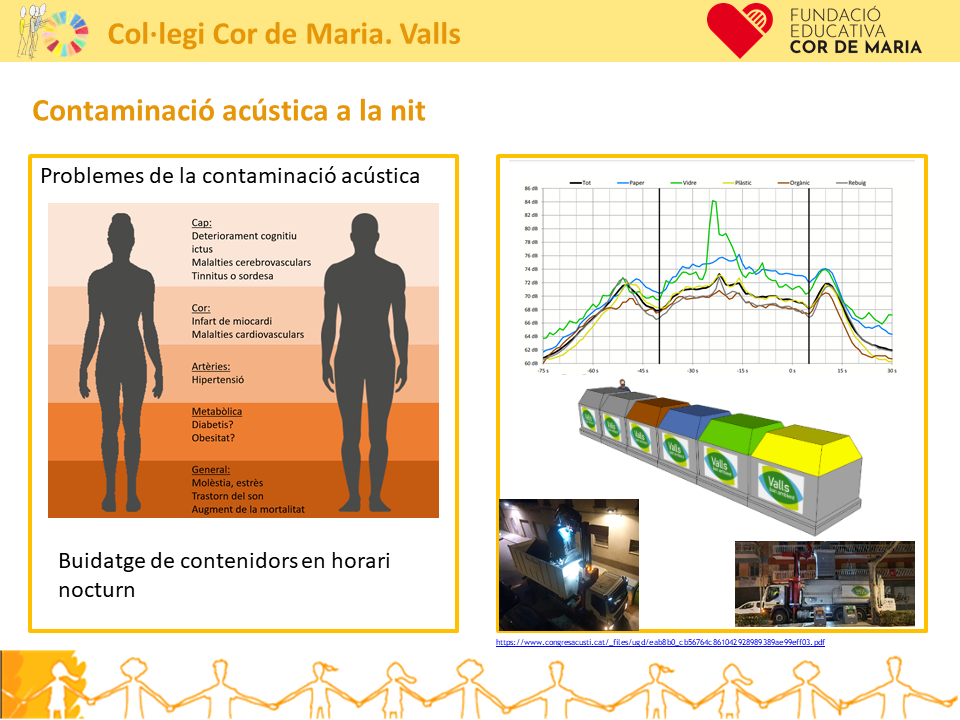
3. Concerts or music at night has an impact on the neighborhood, that needs to be considered, taking into account the decibels and the setting of the stage.
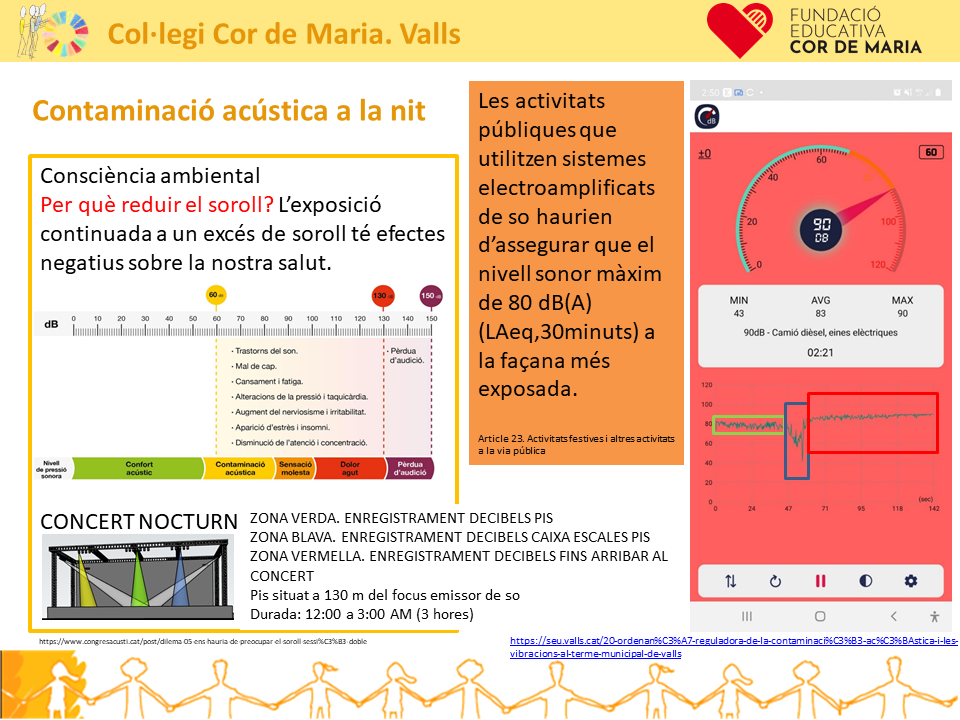
3- PROJECT DEVELOPMENT
Steps followed in the development of the project:
- Find information about the problem detected.
- Draw from the perspective of each student the problem detected.
- Make a 1:10 scale cardboard model of a dog.
- Make a model with a laser cutter of a dog on 1:10 scale.
- Make a 1:20 scale model of a dog with a 3D printer.
- Control the movement of the dog’s head with a servo motor.
- Create a sound app to measure dog’s barking (BitbloqApps, AppInventor).
- Measure trash cans.
- Make the floor plan on 1:20 scale.
- Model and 3D print the containers on 1:20 scale.
- Make a model of the current car park sticking the different parts with a silicone gun.
- Model and laser cut a garbage truck on 1:20 scale.
- Draw, model, and print telescopic crane parts on 1:20 scale.
- Model and cut containers with a laser cutter on 1:20 scale.
- Make the floor plan on 1:10 scale.
- Model and build containers with DM wood on 1:10 scale.
- Make a model of the stage by sticking the different parts (made of EVA rubber, corrugated cardboard, base wood, floor plan and the different parts cut with the laser cutter) with a silicone gun.
- Create several apps with AppInventor to control the truck and the crane.

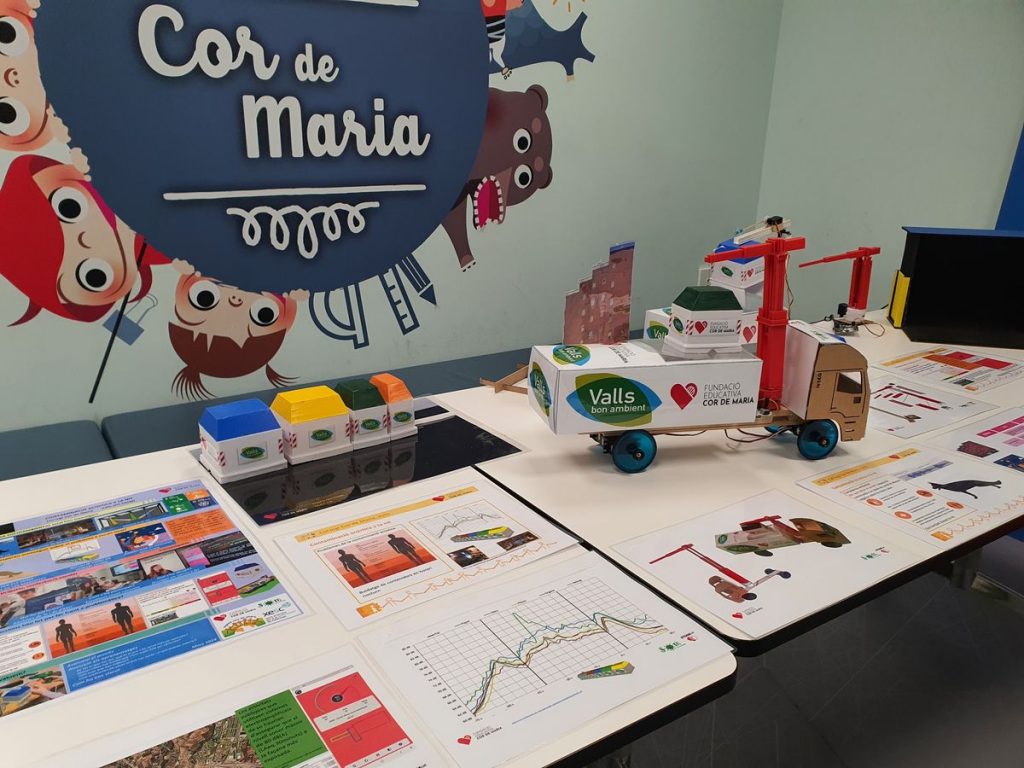


Conclusions:
This project aims to raise the environmental impact awareness of noise pollution in 3 areas:
1. A dog barking at night can wake up a whole neighbourhood. Dog owners can take actions not to bother their neighbours.

2. From a local perspective in the study of garbage collection, it has been checked that, despite having a highly efficient and modern robotic system with low noise levels (considered appropriate), the glass containers emptying should not be done at night (from 11pm to 7 am). Please note that a glass container is emptied approximately every 15 days (the brown or gray container is emptied daily). Technically, the option is considered feasible and acceptable.
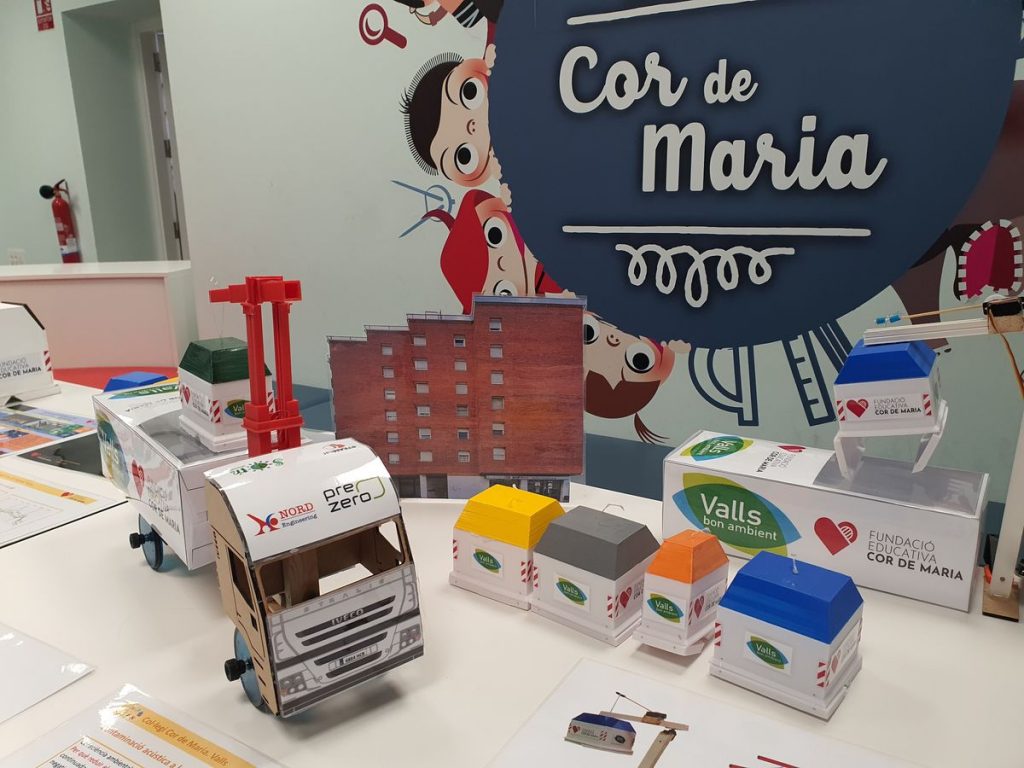
3. Concerts or music at night: It is necessary to be aware of the impact it has on the neighbourhood, because of the decibels and the stage setting which entail health problems.
– More than 13 million Europeans suffer from sleep disorders due to environmental noise.
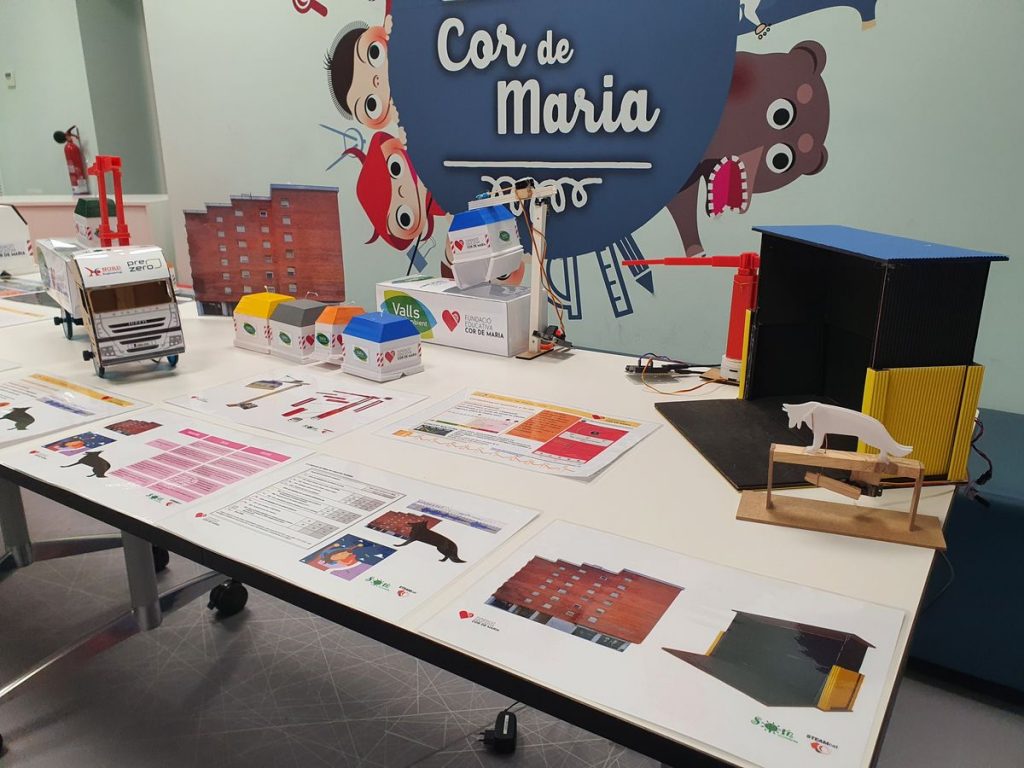
– Almost 32 million Europeans are bothered by environmental noise.
– Noise pollution causes 72,000 hospitalizations per year in Europe.
– Noise pollution causes hypertension and cardiovascular diseases and 16,600 estimated premature deaths per year in Europe.
Different models have been made in order to explain the different problems.

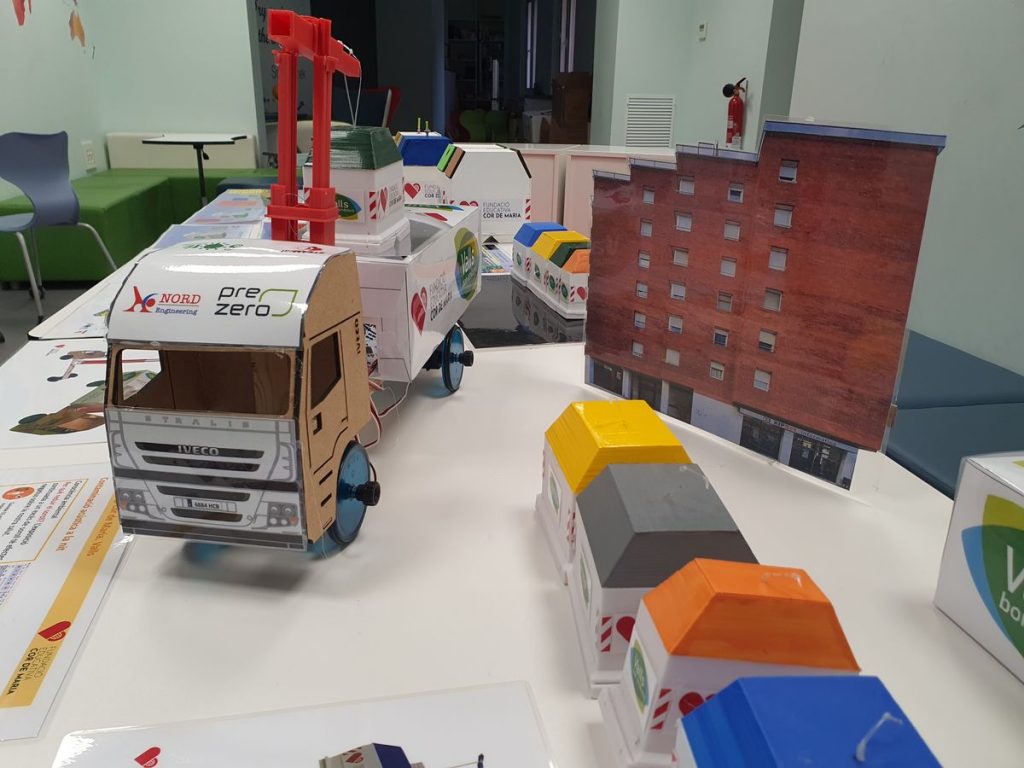
After this study, students have noticed that the option of reducing noise in the cities is viable. We hope that in the future this project can become a reality in our city.
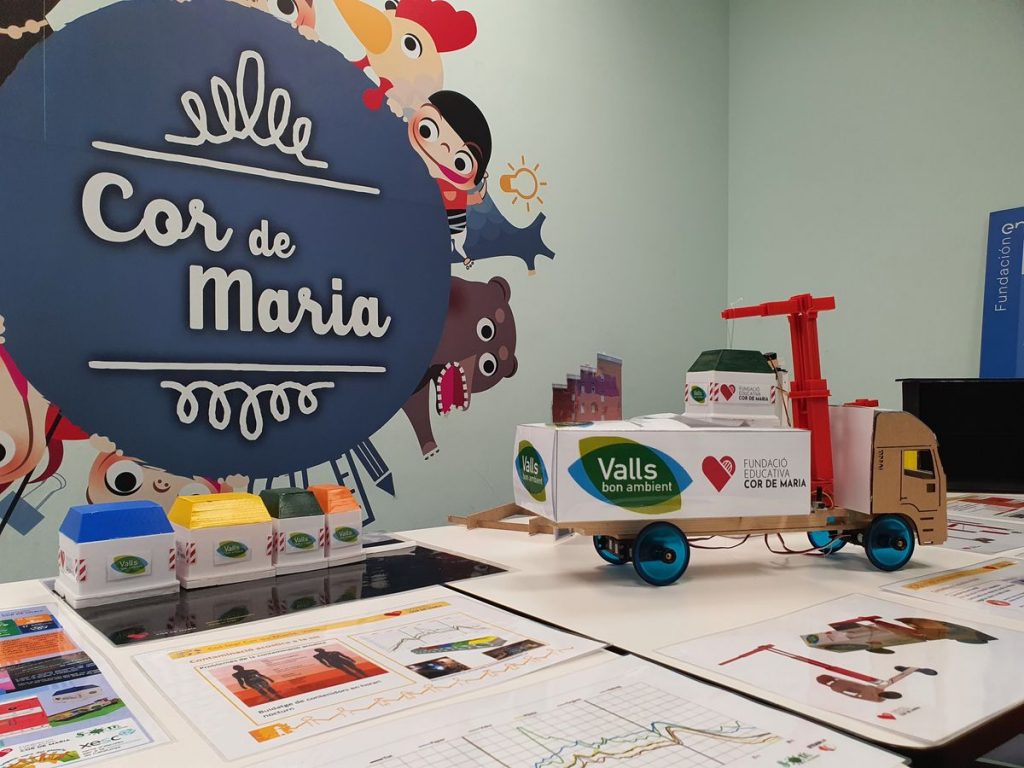
The material of this project can be consulted on the website.
http://www.cordemariavalls.cat/acustica/
Video of the project: https://youtu.be/mKDjVWRHeS8
SUSTAINABLE DEVELOPMENT OBJECTIVES APPLIED IN THIS PROJECT

School: Cor de Maria Valls (Tarragona)
